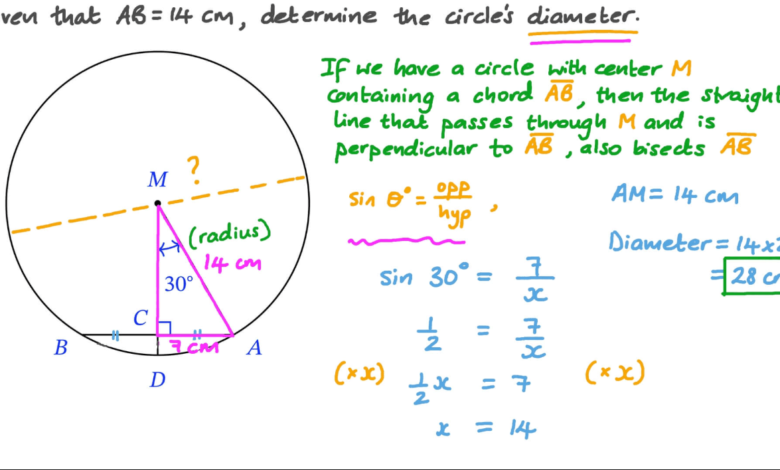What Is the Diameter of a Circle?

Among the most fundamental and widely used shapes in geometry, the circle holds a special place due to its symmetry and presence in nature, design, and science. When studying circles, one of the most important properties to understand is the diameter. But what is the diameter of a circle exactly? Why is it important?
This article provides a detailed explanation of the concept of the diameter, including definitions, mathematical applications, real-world uses, and more.
Understanding the Circle
This fixed distance is called the radius, and the central point is known as the center of the circle.
Essentially, it is the longest distance between any two points on the circle and is always twice as long as the radius.
Definition of Diameter
This definition makes it clear that the diameter is not just any line across the circle—it must pass through the center. This is what distinguishes the what is the diameter of a circle diameter from other chords of a circle.
Formula for Diameter
D = 2r
Where:
- D is the diameter
- r is the radius
Similarly, if you know the diameter, you can find the radius by dividing it by 2:
r = D / 2
These simple formulas allow for quick and easy calculations in both directions.
See also: How Grounding Mats Enhance Wellness Through Natural Energy
Calculating Diameter from Circumference
In cases where you only know the circumference (the distance around the circle), the diameter can also be calculated using the formula:
D = C / π
Where:
- D is the diameter
- C is the circumference
- π (pi) is a mathematical constant, approximately 3.14159
Example:
D = 31.4 ÷ 3.1416 ≈ 10 cm
Visual Understanding
To better understand the diameter, imagine slicing an orange exactly in half.
Real-Life Examples
Understanding what is the diameter of a circle is not limited to academic interest—it has practical applications in many areas of daily life and professional work.
1. Manufacturing and Engineering
In mechanical engineering, components like gears, wheels, and tubes often require specific diameter measurements to ensure compatibility.
2. Construction and Architecture
Architects use the diameter to plan round structures such as domes, arches, and circular windows.
3. Transportation
Tires, steering wheels, and axles all have standardized diameters for performance and safety.
4. Household Items
Common items such as plates, lids, rings, and round tables are often labeled by their diameter.
Diameter in Coordinate Geometry
D = √[(x₂ – x₁)² + (y₂ – y₁)²]
This formula helps find the diameter using the distance between two endpoints on a graph.
Common Mistakes
While calculating or understanding the diameter, some mistakes are quite common. These include:
- Confusing diameter with radius – Remember, the diameter is twice the radius.
- Assuming any line across the circle is the diameter – Only lines that pass through the center qualify.
- Mixing up diameter and circumference – The circumference is the perimeter, not the width.
- Forgetting to divide by 2 when switching from diameter to radius.
Being mindful of these helps improve precision in calculations.
Circle Parts Related to Diameter
Other parts of the circle are closely related to the diameter:
- Radius: Half the diameter
- Chord: Any line joining two points on the circle
- Center: The midpoint of the diameter
- Arc: A portion of the circle’s circumference
- Sector: A “slice” of the circle, like a piece of pie
Understanding how these parts interact makes it easier to solve circle-related problems in mathematics and science.
Diameter in Design and Art
In creative fields like graphic design, interior decoration, and art, knowing how to work with circles and their diameters helps in:
- Creating symmetrical designs
- Maintaining proportions in circular patterns
- Designing logos and circular layouts
Conclusion
So, what is the diameter of a circle? It is the longest straight line you can draw within the circle, stretching from one side to the other through the center. The diameter is twice the radius and plays a critical role in understanding the shape and size of a circle.
From practical applications in construction and manufacturing to complex geometric and algebraic calculations, the diameter is an essential concept. Whether you’re building a round table, analyzing data graphs, or simply measuring a pizza, knowing how to calculate and apply the diameter is a useful skill that transcends math classrooms and applies directly to the real world.




